How many seasons of Futurama are there?
Everyone has something that they are weirdly knowledgeable about. For me, that’s Futurama. It’s one of my favourite shows of all time and I’m only just shy of being that guy who goes to comic conferences to annoy the writers with questions about minor production mistakes.
The thing I’m going to talk about in this post is the show’s season and episode numbers. That might sound like the most tedious thing that has ever been talked about ever, and maybe it is. But it’s also weirdly complicated, to the point where I think it’s interesting.
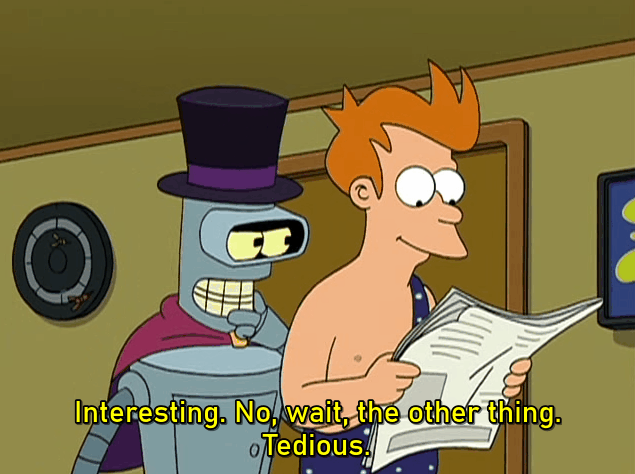
You’d think that a TV show has a certain number of seasons, each containing a certain number of episodes, in some defined order. I should be able to refer to S04E12 or S06E05 as if they were unique identifiers.
You can’t do that with Futurama.
The fact that I was able to put together an entire blog post on this subject should indicate just how completely ambiguous and all-over-the-place the numbering is. If you’ve ever tried to find subtitles, or the episode number to match a clip or GIF you found online, you’ll often find that they don’t match up. This is a symptom of what the networks did to Futurama’s broadcast schedule.
Let’s start this thrilling journey with the production episodes. These are at least unambiguous, although they still aren’t as obvious as you might think. The production episode order is, unsurprisingly, the order in which the episodes were produced, and the order in which the people making the show intended them to be seen.
Production episode numbering follows the production codes. Production codes are internal references to episodes by the production team, and they follow the format 1ACV01, where the first number is the production season and the numbers on the end are the production episode number in that season. In production episode numbering, the numbers are identical - S01E01 is 1ACV01, and S03E17 is 3ACV17. This is in contrast to the broadcast numbering, which (notionally) follows the order in which the episodes are broadcast. Simple enough.
Futurama started with four production seasons on Fox, until they were dropped in 2003. In 2009, Futurama returned with four feature-length straight-to-DVD movies, funded by Comedy Central: Bender’s Big Score, The Beast with a Billion Backs, Bender’s Game, and Into The Wild Green Yonder. After the success of these releases, Comedy Central picked them up for another two 26-episode production seasons, before being cancelled for the last time in late 2013.
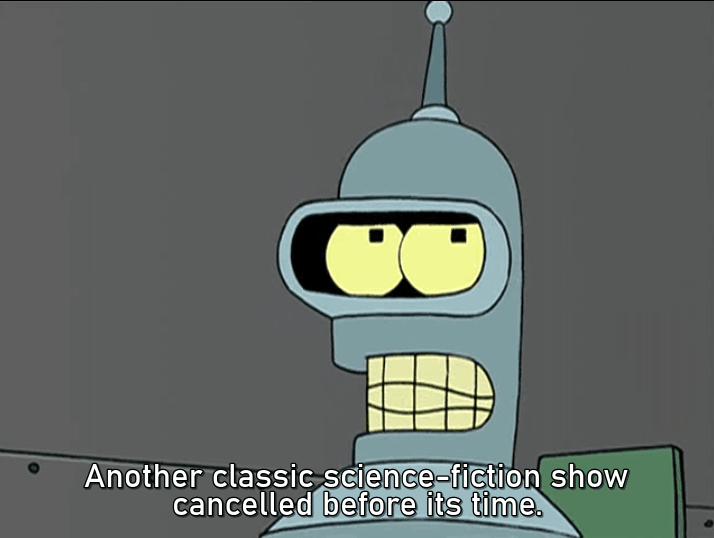
So this is pretty simple, right? Six seasons and some movies. Nope. It’s seven production seasons. When Comedy Central were in talks to pick Futurama back up, in 2009, they were actually signing them up for a 16 episode season, which would have become production season five. The show’s creators had already been involved in conversations about possibly making two or three movies, so they decided to use the 16 episode deal as a way to make four movies, a little under 90 minutes long each. As a result each movie is comprised of four production episodes, making 16 total production episodes. The movies are intended to be watched in one sitting, rather than four parts each, but they have convenient stopping points in the story so that they could be broadcast on TV in an episodic format. That’s production season five. This makes seven production seasons total.
So that’s it… right?
Well, kinda, at least for production episode numbering. There’s one additional relevant production detail around the last two seasons. Each had 26 episodes, but they were not produced in one long unbroken run. Instead, they split the production of each season into two parts, resulting in 13 episodes per part, each released in a consecutive broadcast year, starting in 2010 and ending in 2013. As such, you get season six parts one and two, then season seven parts one and two. The episode production codes ignore this and remain sequential - i.e. 6ACV01 to 6ACV26 and 7ACV01 to 7ACV26 - so they are all considered to be part of the same production season.
Here’s what the production seasons look like:
| Production season | Network | Episode count | Broadcast dates |
| 1 | Fox | 13 | March 28, 1999 to November 14, 1999 |
| 2 | Fox | 19 | November 21, 1999 to December 3, 2000 |
| 3 | Fox | 22 | February 4, 2001 to April 14, 2002 |
| 4 | Fox | 18 | January 12, 2003 to August 10, 2003 |
| 5 | Comedy Central | 16 (4 movies) | March 23, 2008 to August 30, 2009 |
| 6 | Comedy Central | 26 (13 + 13) |
June 24, 2010 to November 21, 2010 July 14, 2011 to September 8, 2011 |
| 7 | Comedy Central | 26 (13 + 13) |
June 20, 2012 to August 29, 2012 July 3, 2013 to September 4, 2013 |
Now we’ve got the vaguely sane part out of the way, let’s talk about broadcast episode ordering.
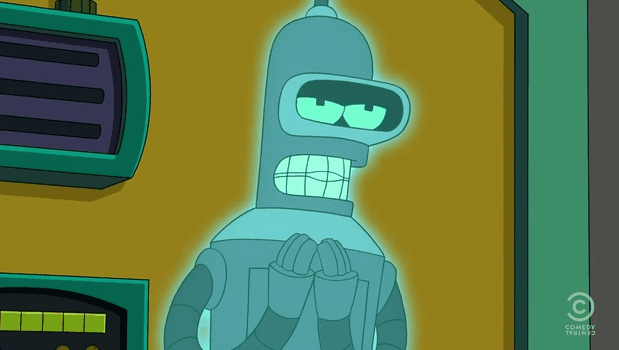
As I mentioned before, broadcast episode numbering doesn’t follow the production order. Instead, it follows the order in which the episodes were broadcast. An important question here is: broadcast by whom? This is the source of much of the complexity in trying to figure out which episode is which outside of production order. While the most authoritative broadcast order would be the order in which Fox or Comedy Central first broadcast the episodes, that’s not much help if you live in a country like the UK or France, where neither of those networks operated directly during the show’s time on air.
Let’s shelve the regional differences for a second and focus only on Fox, who were always the first to broadcast each new episode during the original run. While Fox were effectively the authoritative broadcaster during that time, they were also the most erratic.
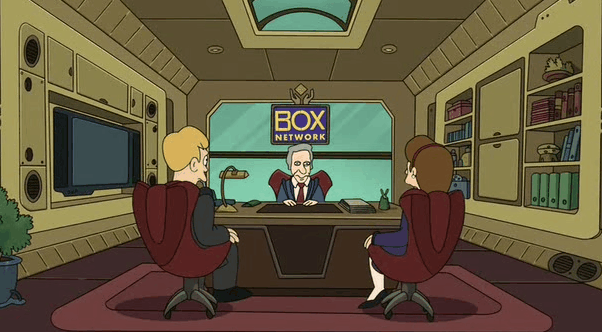
To say that Fox messed up the broadcast order would be an understatement. They shifted Futurama’s time slot around constantly, frequently scheduling it after sports events that were likely to (and did) overrun. Matt Groening stated that Fox executives were “not supportive of the show”. Due to the constant rescheduling and missed slots, many episodes ended up being broadcast out of order. In the end so many episodes missed their usual broadcast slot that Fox created an entirely new broadcast season to accommodate them.
This means that, as broadcast, there are eight seasons: five on Fox during the original run, one for the movies, and two more on Comedy Central. The episodes in those eight broadcast seasons are also jumbled up in terms of order. I don’t mean the odd episode here or there, either. Take a look at this mess:
| Broadcast season | Episode count | Production episode order | Network |
| 1 | 9 | 1ACV01 - 1ACV09 | Fox |
| 2 | 20 | 1ACV10 - 1ACV13, 2ACV01 - 2ACV05, 2ACV07, 2ACV06, 2ACV08, 2ACV09, 2ACV11, 2ACV10, 2ACV12, 2ACV13, 2ACV15, 2ACV14, 2ACV16 | Fox |
| 3 | 15 | 2ACV18, 2ACV17, 2ACV19, 3ACV02, 3ACV01, 3ACV06 - 3ACV08, 3ACV05, 3ACV04, 3ACV09, 3ACV11, 3ACV13 - 3ACV15 | Fox |
| 4 | 12 | 3ACV19, 3ACV03, 3ACV18, 4ACV03, 4ACV02, 3ACV10, 3ACV17, 3ACV20, 3ACV21, 3ACV16, 4ACV11 | Fox |
| 5 | 16 | 4ACV08, 4ACV07, 3ACV12, 4ACV05, 4ACV01, 4ACV04, 4ACV09, 4ACV10, 4ACV12, 4ACV15 - 4ACV17, 4ACV13, 4ACV06, 4ACV18 | Fox |
| 6 | 4 | Movies | Comedy Central |
| 7 | 26 | 6AVC01 - 6AVC13, 6ACV20 6ACV17, 6ACV19, 6ACV16, 6ACV14, 6ACV21, 6ACV23, 6ACV15, 6ACV22, 6ACV18, 6ACV24, 6ACV25, 6ACV26 | Comedy Central |
| 8 | 26 | 7ACV01 - 7ACV10, 7ACV12, 7ACV11, 7ACV13, 7ACV15, 7ACV17, 7ACV16, 7ACV14, 7ACV18 - 7ACV26 | Comedy Central |
The most ridiculous example here is The Route of All Evil (3ACV12), which should’ve been broadcast in season 3, some time in April 2001, but was instead pushed back all the way to December 2002, in broadcast season five. That’s a twenty month delay.
As you can see, Comedy Central don’t get a free pass here either. They too switched around the order in which episodes were broadcast, resulting in continuity breaks. For example, T: The Terrestrial (7ACV16) ends with Leela being in a romantic mood towards Fry, which the story in Fry and Leela’s Big Fling (7ACV17) follows on from. Comedy Central decided instead to broadcast 2-D Blacktop (7ACV15) and Fry and Leela’s Big Fling (7ACV17) together for the debut of the second part of season seven, leaving T: The Terrestrial (7ACV16) to be broadcast a week later, resulting in a complete continuity break. A point could be made that violating causality is incredibly on-brand for the show, but it still makes for confusing viewing.
Regional broadcasting tended to follow Fox’s schedule, but there were exceptions. Unfortunately it’s very hard to find the original dates on which regional networks aired twenty-year-old episodes of Futurama, so I can’t provide an exact order here. It’s pretty clear that there were discrepancies, though, because foreign-language releases of Futurama on torrent websites often have different episode ordering.

You’d think this would be the end of the story: the production order is fairly clear, minus a few caveats, and the broadcast order is completely batshit. Unfortunately, we’re not done yet.
Futurama’s DVD and Blu-Ray releases also complicate matters. Broadly speaking, these releases made the sane decision of following the production episode numbers and ordering. Each of the first four production seasons got its own release (four DVDs on each), then the movies got a release each, and finally the last two production seasons got a pair of releases - one for each 13-episode part. This makes 12 releases total, but at least they’re in the right order.
Except for in the UK. Apparently whoever was putting together the UK release thought that British customers would be confused about season five being the movies, so they called the first 13 episodes of season six “season five” instead, making the second half of season six “season six”, and leaving both halves of season seven as they were. Arguably they just made it even more confusing. Considering the political situation in the UK right now, this feels very on-brand.
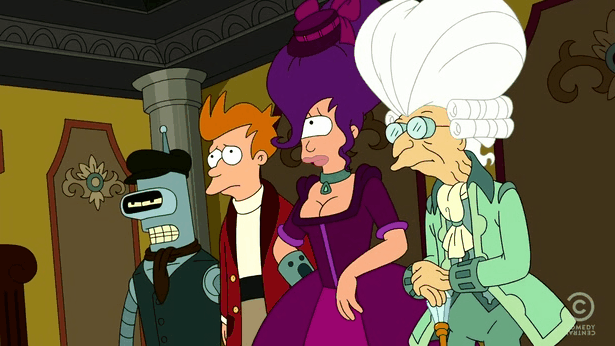
Another thing that might be a little confusing is that each of the first four seasons got two home releases - once during the original broadcast run, and a modernised version with new branding when Comedy Central picked the show back up. An odd exception is that the second releases were only made for DVD content regions 1 and 3, so Europe didn’t get a refresh. The original releases are officially titled with the season numbers written out (e.g. “season four”), whereas the new ones just use numbers (e.g. “season 4”). This doesn’t match the box art, though, which mostly uses numbers on both releases, except for certain countries (e.g. Australia) and special releases.
This changes yet again when you look at the box sets. The complete box set creates yet another numbering scheme: volumes. In this scheme, the first four production seasons are volumes one through four, with episodes in the correct production order. Season six parts one and two become volumes six and seven, and season seven parts one and two become volumes eight and nine. This appears to have been done in a misguided attempt to replace all of the competing numbering schemes with a new, more coherent one.
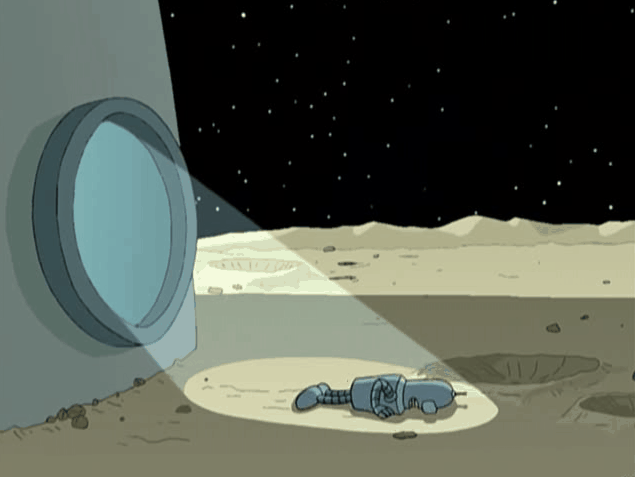
Of course, the UK got its own refreshed box set release, because we’re special. I’ve just given up on trying to find out what the episode ordering is in that one. I’m assuming it’s something new and horrifying.
There’s one last thing I need to cover before I let you wander off, dazed and bleeding from your ears, and that’s streaming services. You can watch Futurama on Amazon Prime Video. What they’ve done is nothing short of violence.
Prime uses the broadcast order, turning the first four production seasons into five. Season six is then the four movies, which as far as I can tell is a brand new move in this game of malicious ambiguity. They at least didn’t split the movies into four episodes each, but they did split the final two production seasons into two seasons each, calling them seasons seven, eight, nine, and ten. Even worse, they kept the idiotic reordering of 7ACV15/16/17, so you get to enjoy the jarring continuity errors.
So, how many seasons of Futurama are there? Six, seven, eight, nine, or ten, depending on who you ask. What order are the episodes in? Who the hell knows. But at least you’re now prepared for the next time you end up in an internet argument about which Futurama episode number is which.
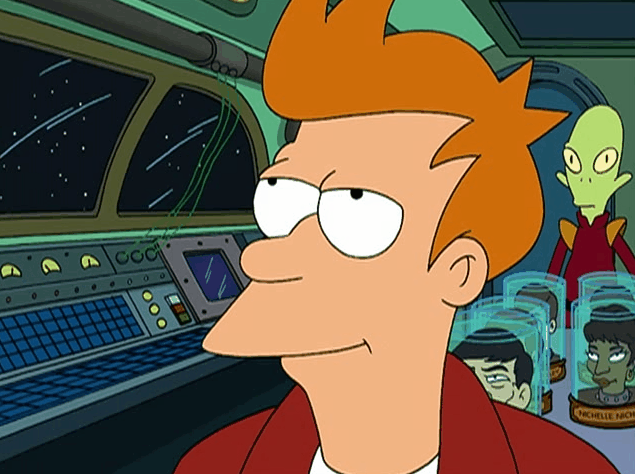
Update (2023-07-24): Hulu picked Futurama back up and released season seven, eight, nine, ten, or eleven (depending on what metric you feel like using) today!